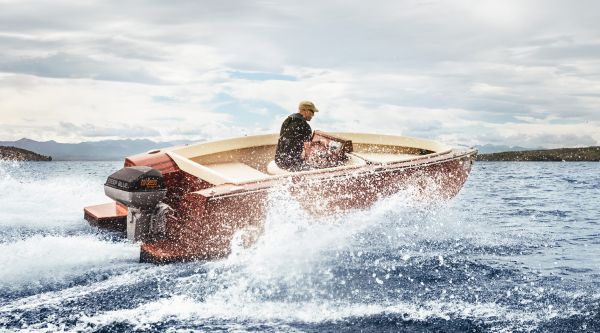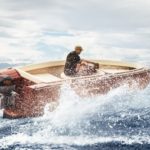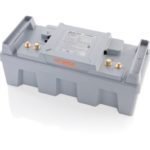
We fishermen have seen all-electric boats come and go, but most of these vessels have been small, slow and had limited carrying capacity that make them best suited to ponds or protected lakes.
Electric outboard motors with from five to 10 horsepower are available from several makers, and electric primary propulsion outboard motor systems for open utility and pontoon boats have long been available from manufacturers like Minn Kota and Torqeedo.What we haven’t seen before is an 80-horsepower electric outboard with the power to plane most types of recreational boats.
About a year ago, West Marine mounted a Torqeedo Cruise 4.0 electric outboard powered by two Torqeedo lithium manganese batteries on one of its 12-foot inflatable yacht tenders. The Cruise 4.0, rated at between 8 and 10 horsepower, planed the inflatable and pushed it to 15 1/2 mph. The boat’s estimated range on the two batteries is 15 to 20 miles, and West Marine now markets this power system as an electric planing package for its tenders.
The event caused quite a stir in electric outboard waters, but I think the new 80-horsepower outboard is going to cause the whole lake to turn over.
We can expect “different” performance from electric outboards. At first glance you might think that electrics tend to weigh less than gas-powered outboards. The Torqeedo 4.0 Cruise weighs 40 pounds, while the dry weight of a Mercury 8 or 9.9hp outboard is 84 pounds. But, two of Torqeedo’s Power 26-104 lithium batteries weigh a total of 110 pounds, while the Mercury outboard’s 3.2-gallon portable tank probably weighs about 5 pounds and gasoline weighs about 6 pounds per gallon for a total full-tank weight of around 23 pounds.
So, the electric starts out at 150 pounds, and the gas outboard at 107 — and the gas engine’s tank will get lighter as the fuel is burned.
There is definitely a difference in how the two outboards produce power. Electric motors produce maximum torque as soon as they start turning; theoretically, they put out full power from one RPM on up to their maximum RPM. Gas engines produce maximum horsepower and torque within a fairly narrow power band at higher RPM.
I think this difference will prove important to boats running at planing speeds because an electric motor may be able to hold a boat on plane at throttle settings below the point where a gas engine develops sufficient horsepower and bogs down. Electric outboards won’t bog down as the throttle is retarded, and the hull they are powering won’t fall off plane until speed is reduced below the hull design’s minimum planing speed.
I expect boat manufacturers to take a second look at their hull designs with electric propulsion in mind.
That has to happen anyway because Torqeedo is only offering the 80-horsepower outboard to boat makers willing to install the Deep Blue system during boat production. Its 325-volt DC system needs to be built into a boat also designed to hold the system’s lithium batteries. These batteries are originally from the automotive industry but were further developed for marine use.
Thanks to a partnership with global battery giant Johnson Controls, the Deep Blue system’s batteries come with a nine-year capacity warranty.
Typical Torqeedo small-motor benefits are also part of the new high-performance system starting with the efficiency to achieve greater power and range with a limited battery power supply.
It also has an onboard computer that uses GPS to calculate remaining range and display travel time and direction to individual waypoints.
The company feels that using battery technology based on automotive standards and including redundant electronic components work together to increase the system’s safety.
Torqeedo says that commercial outboard users with gasoline costs over $5,800 per year and whose speed and range requirements are met by Deep Blue can switch away from gas outboards and start saving money right away. The environmentally-friendly, quieter and future-oriented nature of electric power also make good business sense.
The powerful motors can also bring high-performance boating fun to waters where gas engines are prohibited.
No word on the system’s cost yet, but Torqeedo’s new outboard stepped in front of 114 other entries to win the overall design award at the November 2012 International Marine Equipment Trade Show in Amsterdam, Holland. The company reports no shortage of interest from well-known boat manufacturers in Europe and the U.S.A. For more information, contact Torqeedo’s Illinois office at 815-444-8806 or visit usa@torqeedo.com.




